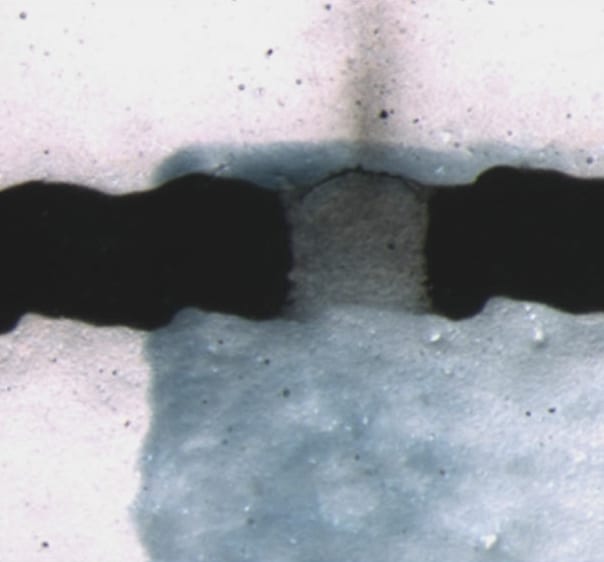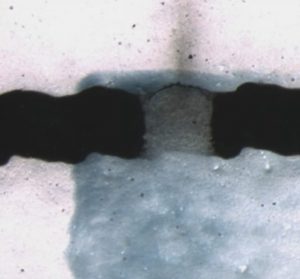The field of printed electronics has given us a vision of ubiquitous electronic products, integrated on everyday, low-cost products, such as sensors or labels that can be printed on flexible substrates for food packages to indicate fresheness, temperature, or other important parameters. However, printing of electronic devices requires a resolution that is beyond the limit of conventional graphical printing. Another bottleneck that prevents production scale-up (e.g. roll-to-roll or sheet-based manufacturing) is the accuracy of the positioning of the substrate between the individual process steps.
Now, in new work, a German-Swedish research collaboration between the Chemnitz University of Technology, the Fraunhofer Institute of Electronic Nanosystems (Chemnitz), Linköping University, and Acreo AB (Norrköping, a research institute from the Swedish ICT sector), present a novel, hybrid manufacturing concept for organic electrochemical transistors (OECTs).
Initiated by the EU ICT FP7 Network of Excellence “PolyNet” (2008-2010, grant agreement 214006), the researchers combined standard printing and laser microstructuring techniques. The nice thing with OECTs is that their electrical parameters do not strictly relate to the feature size: low-voltage operation is independent of the transistor channel length and the thickness of the dielectric layer, lowering the resolution demands compared to other transistor concepts like field-effect transistors.
Addressing the alignment precision, the key of the manufacturing concept is to have the laser light find its target automatically: only when and where the scanning laser hits the printed conductive layer, the material is delaminated and the layer is separated into the two electrodes, source and drain. At the same time, the deposited heat introduces a vertical void in the transparent dielectric layer above. The void is autonomously filled by capillary forces when applying a semiconductor material in a subsequent printing step. Finally, after printing a liquid electrolyte, a coated plastic foil is laminated on the stack from the top, forming the gate electrode and completing the transistor.
The subtractive step allows for printing arrays of OECTs (17×50) on DIN A4 (297×210 mm²) flexible sheet substrates. As a perspective, the combined usage of digital techniques (scanning laser, inkjet printing) can pave the way for personalized devices, e.g. arrays of OECTs with varying electrolytes as the active elements in printed large-area sensor arrays.


















